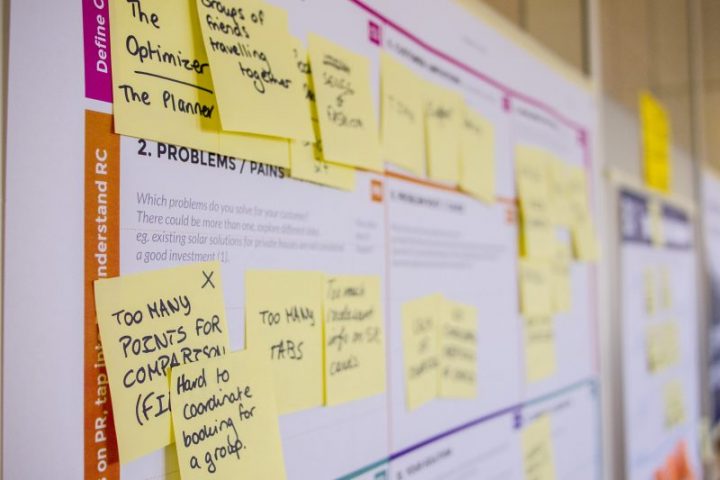Lean Startup methodology offers best practice in order to innovate at great speed in the face of dynamic market forces and the external disruption. Lean Startup methodology is about using minimal resources to maximize impact at the fastest pace possible.
Want to learn more about lean startups? Read our detailed article:
Lean Canvas.
Key Methods of the Lean Startup Methodology
Minimum Viable Product: In the lean startup methodology, the minimum viable product is an essential component. It represents a prototype of future service or product with just a minimum amount of effort and time. A minimum viable product should have key characteristics of a future product. It is created with an aim to receive feedback on the idea that is implemented and to make relevant adjustments at a quick pace. The approach is customer-oriented and its focus is on the clients’ needs and requirements.

Pivot: Based on the lean method every single idea is tested and improved. The startups need to change the direction by coming up with a new hypothesis which is then tested for market success. This change of direction is called Pivot. The success of the startup largely depends on the promptness and accuracy of its implementation. Many startups aren’t willing to make pivots since it is demotivating to abandon an initial idea which at that time seemed perfect.
A pivot isn’t always about failure since a correct pivot can save the business.
Switching to other target audience or starting to solve customer’s problems, changing the project’s scale, changing business architecture, changing technologies are a few examples of various types of pivots.
Guiding Principles of the Lean Startup Methodology

Entrepreneurs are everywhere: According to Eric Ries, anyone that has a startup is an entrepreneur. Therefore, lean startup principles can be applied to any kind and size of
Entrepreneurship is management: In the condition of uncertainty the manager should be able to act accordingly. The employees should be encouraged to do as many experiments as possible.
Validated Learning: In a lean approach every startup’s actions are considered an experiment whose goals is to achieve validated learning. The hypothesis should be proven empirically. There are three stages of validated learning:
- Build: Create a minimum viable product and receive feedback in order to understand the actual state of the things.
- Measure: Try to put the baseline lose to the ideal rates which may require multiple attempts.
- Learn: Decide which direction to move into or admit if a startup requires a pivot.
It is very important to ensure that one is relying on the right metrics and isn’t deceived by irrelevant figures.
Build-Measure-Learn loop: According to this lean startup principle a product or service should be designed and then presented to the market as soon as possible. For this to happen the following scheme should be followed: Ideas → Build → Product → Measure → Data → Learn.
Innovation Accounting: An entrepreneur should know how to measure the progress, set up the milestones, and how to prioritize work. A startup should be able to access its current position and then experiment on improvement. One should pause and see once in a while if the pivot is needed. If you are planning on implementing lean methodology to your startup, get a free consultation.








Can you inform me what platform are you using on this site?
WordPress